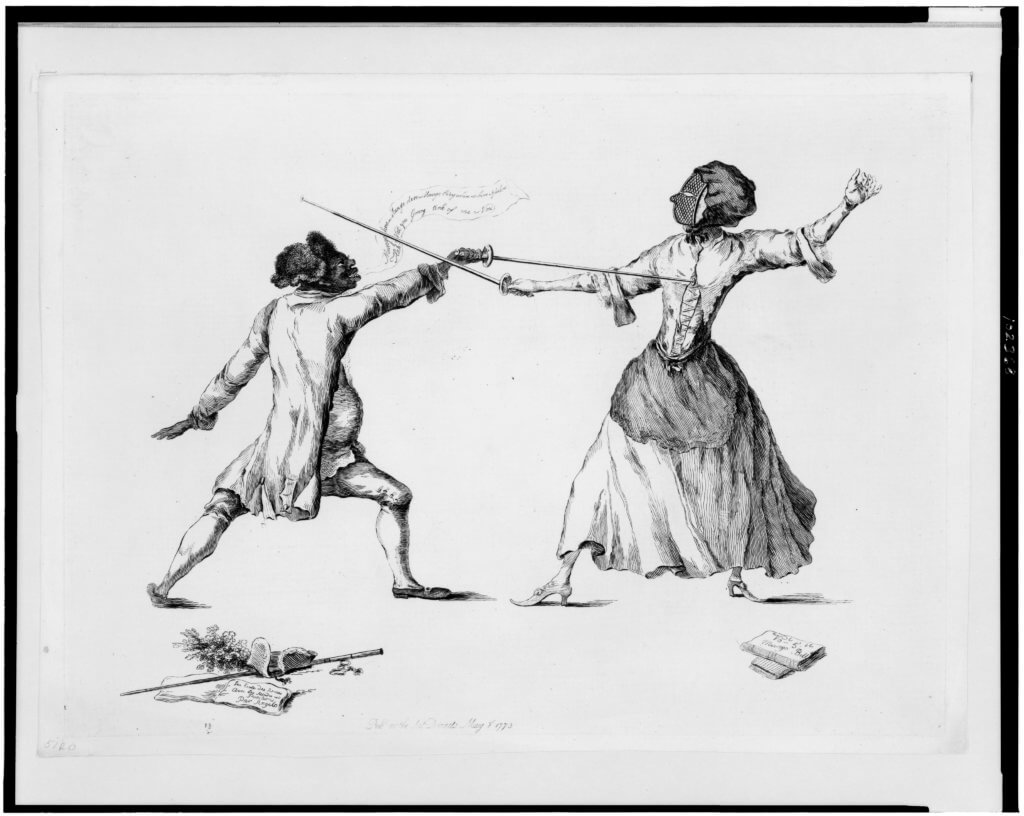THE ADVENTUROUS LIFE OF JULIUS SOUBISE
In 1764 a young black slave boy, born at St Kitts in the West Indies, was bought by a Royal Navy captain and taken to England. Little is known about his parents – he was believed to be the son of an enslaved African woman and an English father. It may be that his father sold him to the captain in the hope that the young boy would have a better life in Britain and this is indeed what happened. The well-connected captain presented the ten-year-old lad to his cousin, the Duchess of Queensberry, who freed him from slavery in an act called manumission and gave him the name of Julius Soubise after a French prince. (We do not know his original name.) He was certainly a handsome and engaging dark-skinned man and as he grew up in London he was considered a ‘macaroni’ the term for a fashionable fellow in the 18th century. He was taught fencing by the Italian master Domenico Angelo and horse-riding as well, two skills that he would later put to good use, and he was also a musician, singer and actor, being tutored by David Garrick.

Julius liked to imagine he was an African prince and had his portrait painted wearing exotic robes and a turban plumed with feathers. It was rumoured that his employment with the Duchess of Queensberry may have developed into something more than a servant/mistress relationship. But things suddenly went wrong and the glittering London life ended abruptly when Soubise was accused of raping a maid servant and running up large debts. His protector, the Duchess, died in June 1777 and the next month Soubise was packed off to India arriving in Calcutta in March 1778. There his story seemed to end, and his days of entertaining London society gone for ever. But thanks to recent research we now know what happened when the 23-year-old arrived in India to start a new life. By 1780 Soubise had set up a ‘riding academy’ in a manège rented from Captain (later General) Claude Martin of Lucknow. The manège was described as a place for the reception of horses, where they were fed, stabled and shoed. At the same time Soubise also advertised himself as a fencing master, ready to teach this gentlemanly art to European men in Calcutta. His acting skills led to the staging of ‘Othello’ at the newly built theatre where he naturally took the title role and the part of Desdemona was played by a man ‘of doubtful gender’ as the Calcutta Gazette has it. A fencing school was opened in 1784 and four years later he set up a new riding school with an opening banquet and ball for 200 hundred people. Although insolvency dogged Soubise’s ambitions, he always seemed to bounce back but there was a three year hiatus spent in Lucknow at the nawabi stables. During this period he rented a bungalow from Claude Martin and also borrowed money from him too, which was not repaid. Returning to Calcutta he was assaulted by his French neighbour who slashed him with a razor, possibly over another debt or another woman, but he found marital happiness with Catherine Pawson, the daughter of an East India Company officer. The marriage of a black man to a white woman raised several eyebrows, but the couple were clearly devoted and had a number of children. Soubise’s final venture was the grandly entitled Calcutta Repository which provided ‘spacious, airy and convenient stables’ for the horses of wealthy Europeans. It was situated in a prime location at the top end of Chowringhee where the Tipu Sultan Shahi mosque stands today. It may have been here that Soubise met with a fatal accident. Thrown from a horse he was found with a fractured skull and blood seeping from his right ear. He died the following day, 25 August 1798, in hospital in the arms of his devoted wife. He was buried in the Bhowanipore cemetery, then known as the Military Burial Ground at Alipore, which had been opened in 1782. Sadly his grave no longer exists, the cemetery having been extensively cleared in the late 1990s (see Chowkidar Spring 2012). But what is even sadder is that Soubise has been completely erased from Calcutta’s history. He gets no mention in William Hickey’s engaging diaries of the period, nor in Cotton’s extensive Calcutta Old and New. His name is consistently mis-spelled in Claude Martin’s financial accounts (see book review on page 39). Julius Soubise deserves to be remembered as a man who rose from the humblest possible circumstances to become a celebrity in England and India. He was certainly a rogue, both with women and with money but also someone whose remarkable achievements should not be forgotten. He deserves a decent full length biography rather than being side-lined in academic journals.
Dr Rosie Llewellyn-Jones MBE
Editor of ‘Chowkidar’
